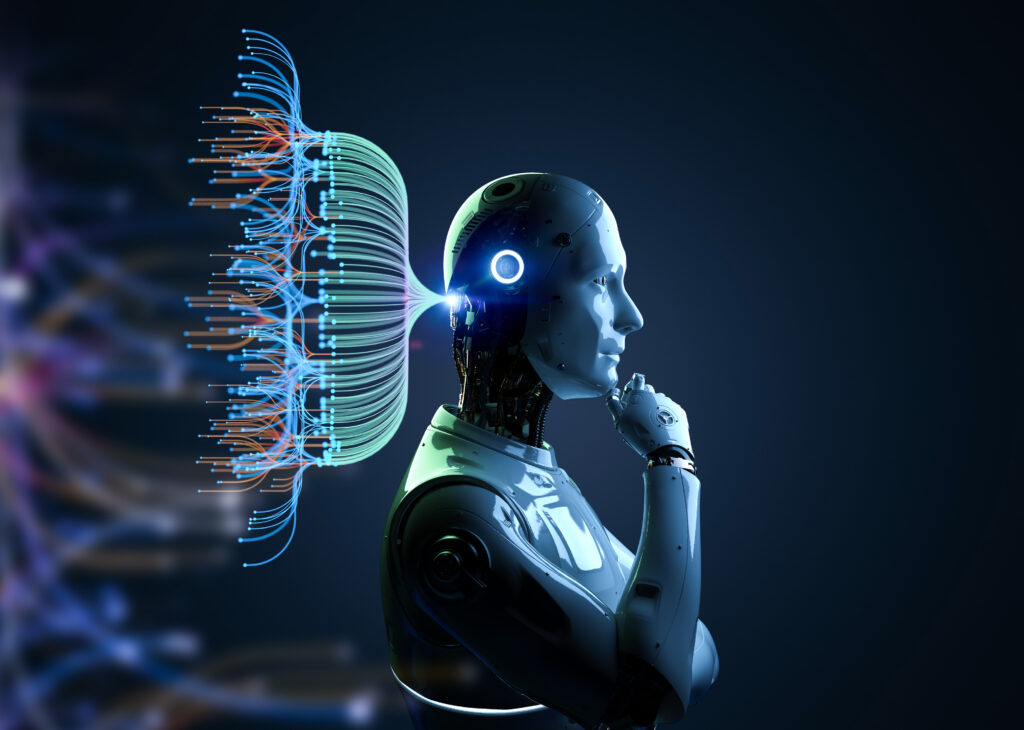Finding IP Value
Making Sense of Machine Learning

By: Stephen C. Hall
Artificial intelligence (AI) is everywhere, and its use will only continue to expand. Machine learning, a type of algorithm used in AI, is involved in image and speech recognition, pattern detection in data sets, and market trend analysis. AI provides other capabilities as well in this wide expanse. With AI being on the minds of many, it is necessary that all of us become more conversational around AI and, particularly, machine learning.
Why it matters: Formal training in AI was not part of the curriculum for many. It’s not that AI wasn’t on the horizon. Rather, it seemed to be from a different world – a world that is here, now.
Consequently, being conversant in AI is becoming a necessity rather than a luxury. Consider any of these scenarios, in which you get to:
- collaborate with your company’s CEO on an AI presentation for a trade group,
- advise clients on opportunities, risks, and obligations associated with AI,
- be the hero of your kitchen table in regaling your family with relatable knowledge of AI,
- and on and on.
Having a few foundational concepts and continuing to build knowledge are the keys to becoming conversant.
The Big Picture of Machine Learning – Progression and Scaling Up: Two concepts that link to each other help set the foundation. They are called “progression” and “scaling up.”
Progression in machine learning indicates that the computer’s performance progresses with experience rather than due to further programming. Scaling up indicates that troves of data are needed to accomplish machine learning. Let’s look at these concepts further.
Progression – the funnel analogy. This analogy helps illustrate an idea called feature extraction in a machine learning model. The idea boils down to associating labels with specific features, which may be found in images, text, numbers, music, and so forth.
Picture a funnel with its broad end representing a large category, such as all manner of plants – both flowering plants and trees (woody plants). Image feature extraction would take an image and associate different features to distinguish what is contained in a picture. The following table helps to illustrate the concept:
| FEATURE | LABEL | EXCLUDES |
| bark | tree | flower |
| leaves | deciduous | evergreen |
This progression moves the process several levels down the funnel. Then, other distinguishing features and labels can be added to the computer’s repertoire, narrowing the field toward a prediction. For example, features called out in a training data set may include the texture (smooth or rough) and color of tree bark for more distinguishing characteristics. Figuratively, each added feature and correct label moves the process toward the narrow opening of the funnel.
In supervised machine learning, a person ensures that the computer associates the correct label with a given feature. If the feature is bark and the label “flower” is selected in error, the appropriate correction is made. Training is a trial and error process, but in this way even the errors make the predictions more powerful. Progress is through experience, not additional programming.
In this manner, the narrow opening of the funnel in our analogy actually becomes a prediction identifying what an image portrays, based on features. In the basic example provided, a computer might accurately predict, say, that a birch tree is shown in an image.
Scaling up – how much data is needed to train. While the tree analogy is basic, at sufficient scale the training process makes a powerful predictor. Notably, the scale (more data) and the quality of the data determine how accurate the predictions will be. Once we understand that progression is about feature extraction and repetition, the scaling up aspect makes more sense. It takes huge data sets – repeated over and over. To get a better idea of scale, consider how much data your smartphone can store – a comparable amount is used in some training models.
Machine learning verses human intelligence: Some think AI involves machines simulating human intelligence. But machine learning can only operate based on what has been presented during the training model. For example, imagine if you had a time machine and went to 1960 Liverpool, England with a musical AI program. If the Beatles used your generative AI as a shortcut for coming up with their songs, the outputs could only originate from what was available pre-1960. If the Beatles went too far with it, perhaps sacrificing some of their own human musical genius, it’s hard to see them coming up with their full catalog.
For some further insights, why not turn to AI itself and input these queries into ChatGPT. The outputs may interest you:
- General queries for ChatGPT:
- Is machine learning similar to how people learn?
- How does machine learning compare to Bloom’s taxonomy? [Search Bloom’s taxonomy | Center for Teaching | Vanderbilt University]
- Specific queries to try on ChatGPT:
- Why won’t water come out of the hose?
- How do I remove the hook from the fish’s mouth?
With the specific queries, notice an emphasis on logic and procedure for machine learning. It seems less about the observation and know-how a person with experience could share.
What else is under this umbrella: Machine learning is not the only category under the AI umbrella. Others include neural networks, deep learning, and natural language processing, which will be for future posts. But we chose machine learning to cover here, because it is more general and provides a sense of the training models that underlie artificial intelligence.
Practically speaking: A host of practical, legal, and moral issues may arise. Here are a few to consider:
- Is your company’s data being used to train someone’s machine learning model? If so, what contractual restrictions should you pursue?
- Is the content generated by machine learning reliable or unreliable?
- If unreliable, who is responsible for mistakes?
- Who owns the intellectual property rights over information generated through machine learning?
- What biases could wind up being inherent in a machine learning training model?
These only scratch the surface. Just as there is no discernible end to what AI is capable of generating, the number of issues that may arise also seems infinite.
